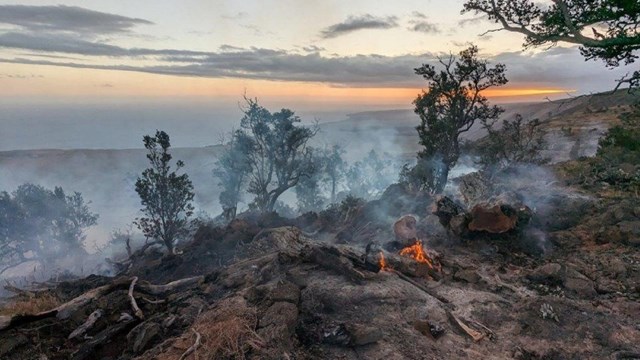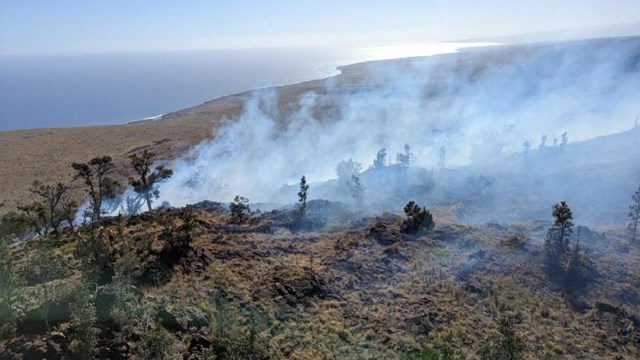|
Hawaiʻi Volcanoes National Park has experienced a century-long history of drought, which has had significant impacts on its native ecosystem. Droughts are often accompanied by high temperatures and reduced cloud cover that can last weeks to even years depending on the duration of below-average rainfall. Various negative consequences can occur, such as increased wildfires, loss of bird habitats, reduced availability of forage, growth of non-native plants, and more. Future climate projects indicate that the park will become hotter and drier by the end of the century. To mitigate this, resource managers are employing various strategies to protect the park's delicate resource such as establishing fire fuel breaks, restoring fire resistant native plant communities, managing invasive species, and understanding the timing and strength of El Niño events. To learn more about the impact of droughts in Hawaiʻi read the following articles in English and ʻŌlelo Hawaiʻi : 
Drought in the Pacific
Extended dry periods can be a deadly situation for many native species across the park. 
Ka Malo‘o ma ka Moana Pākīpika
He pō‘ino loa ka wā malo‘o no nā meaola ‘ōiwi he nui ma ka pāka.
This page was created and funded by The Pacific Drought Knowledge Exchange (PDKE), the East-West Center, U.S. Forest Service, and National Park Service. PDKE seeks to facilitate drought knowledge exchange and enable collaborative relationships among drought stakeholders in Hawai‘i and in Pacific Island Nations.
|
An official website of the United States government
Here's how you know
Official websites use .gov
A
.gov website belongs to an official government
organization in the United States.
Secure .gov websites use HTTPS
A
lock (
) or https:// means you've safely connected to
the .gov website. Share sensitive information only on official,
secure websites.
